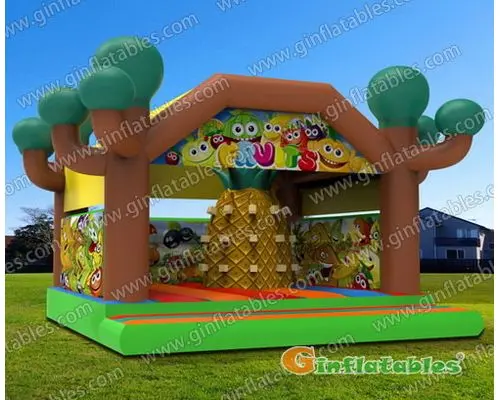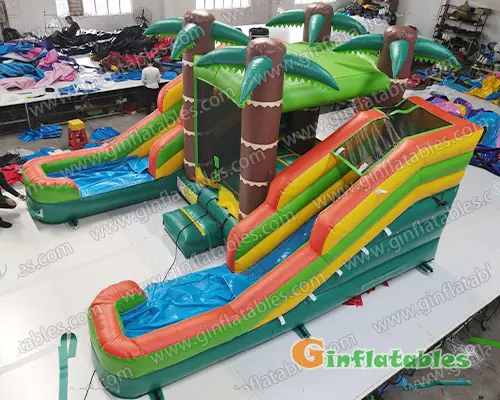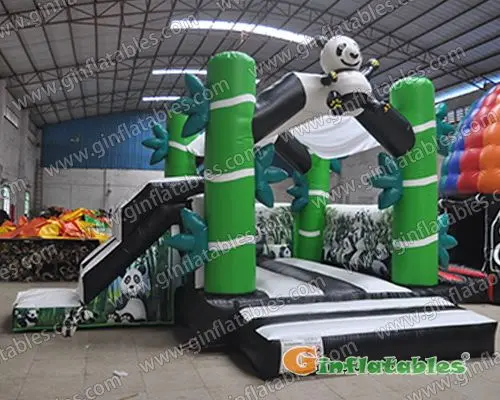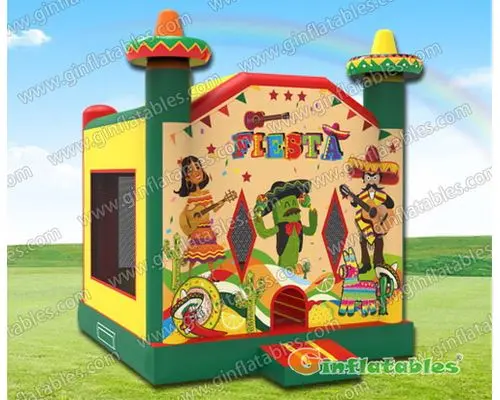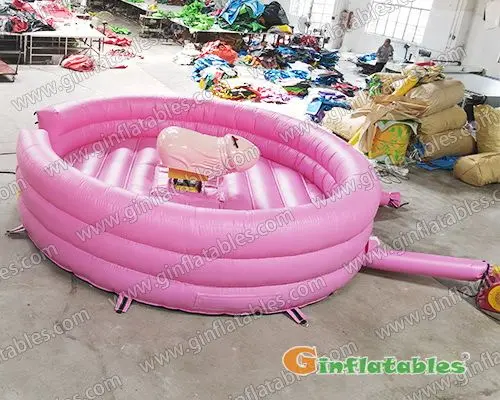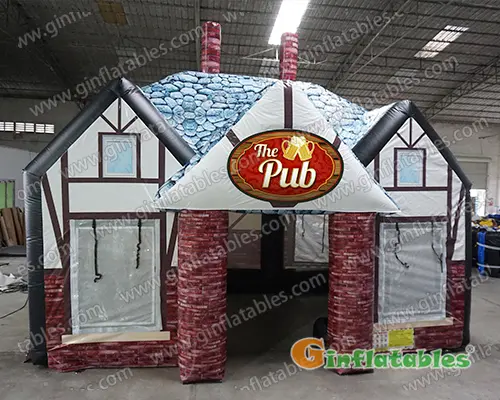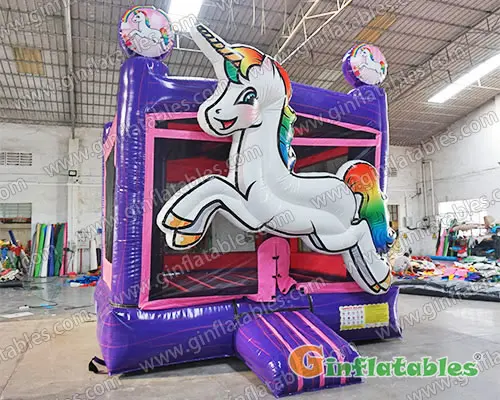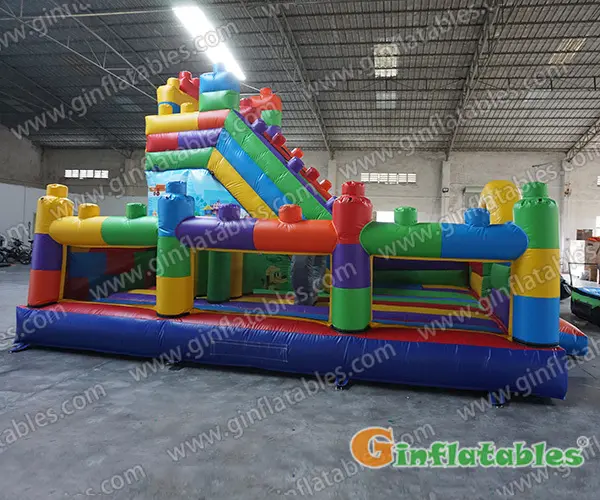Are Bounce Houses Safer than Trampoline?
Children love jumping up and down. Whether it be a puddle or pool or even in their beds- hyperactive children will bounce and skip about anywhere they can. Even adults can relate to jumping when they were children.
Jumping is fun, and nothing can beat jumping on top of the bounciest trampoline. However, are they safe? This could be something you should be thinking about the next time you purchase a trampoline for your child’s entertainment.
Whether a trampoline is safe or not depends entirely on the weight and height of the child. What is more, if there are too many children on a single trampoline, even then, it might snap. Trampoline risk of injury happens most often when people attempt to do tricks off the trampoline or jump higher than they are supposed to.
Don’t fret about it too much because bounce houses are here to save the day. When it comes to safety in your child’s bouncing career, nothing can beat bounce houses. As long as the house is inflated correctly, your child will be able to bounce about inside safely.
Bounce House vs. Trampoline
Maintenance
When it comes to maintaining a bouncing house, you might have a lot of work in your hand. Bounce houses are known to require intensive maintenance. They require an electric hookup to inflate, which means everything from the cord to the air pump needs to be inspected and maintained. Although the materials are pretty durable, they can tear, especially at the seams. Repair is required to keep the house inflated.
On the other hand, Trampolines consist of a simple frame- a series of springs, a jumping mat, and a net. Due to their simplicity in structure, trampolines are easy to maintain and clean up.
Space
Trampolines, due to their small frame, do not require much space. It is usually portable and can be stored anywhere without any issues.
Bounce houses can take up a lot of room. Setting them up outside means they need enough open area, which may not be available if there are trees or fences nearby. Storage space for these inflatable bouncers is negligible. All you need to do is deflate the air from the inside, fold them into a bag, and store them wherever you want.
Only when you are entirely inflating the house will you notice how much space it takes over. If you want to have your bouncing house inside, you should consider buying a small bouncing home beforehand. It will help you save a lot of safe. You could also decide to check on other indoor bounce houses, which are very similar to inflatable trampolines.
Cost
Both trampolines and bounce houses are expensive toys. Trampolines vary from around $100 to $500 depending on the brand and other added features. An average-sized bounce house costs about $200 to $400.
A more complicated bounce house with added landslides and sliders can cost far more. There is also the electricity cost you need to take into consideration when buying bounce houses. The trick to purchasing a bouncer for cheap is to go for tiny bounce houses. It will cost far less than the average size one. Even the electricity cost will be lower.
If your child has friends over, you could consider hiring a bounce house for a few hours. Hiring them does not require as much of a fortune as buying one will have. It can range anywhere from $10 per hour to $250 per day.
Safety
Trampolines are far more dangerous than you can ever think of. The primary safety issue with trampolines is a kid getting a bad bounce and flying off onto the ground. In the worst case, the child might have a severe concussion. In the best case, they might get off with a minor injury.
Children also tend to do crazy tricks while they are jumping about on top of a trampoline. The injuries this can cause are spinal issues, broken bones, and head and neck injuries.
Bounce Houses are far safer than trampolines, no matter which perspective you see them from. You do not get these cases due to their interiors being covered in inflatable bouncers. So, even if you miss-bounce, you will hit the roof or walls and bounce back into the house.
To bring a conclusion, it’s evident that bounce houses are much more safer than trampolines.
Fruit Bounce House
If you are looking for a bounce house to buy, you could buy them anywhere from your local toy store to online shops. Our recommendation is to buy the fruit bounce house.
The fruit bounce house is made from commercial-grade 15-18oz heavy-duty vinyl and finger protector safety mesh. It is 100 percent fire retardant and lead-free. Multiple stitches on the inside ensure far more safety than in any other bounce house. Waterproof Velcro webbing means that no matter what, no moisture can cause any wear and tear to the house.
The zipper drains allow water to slip off before it can collect, and the sealed seams help ensure no water enters the interior. The anchors holding the house are all made of alloy materials. These are mold and rust-free. This makes the bounce house highly durable and long-lasting.
What sets this product from others is that it is the first product manufactured by a full-Automatic Cutting machine—this machine stitches products with more accuracy and higher quality.
This product is certified following CE, EN71, EN14960, ASTM, and ISO standards. Canadian TSSA and Australian AS3533.4.1-2005 have also approved of it.
Conclusion
Generally, a lot of rules need to follow when setting up a bounce house. It is hard to install a bounce house, but you still go through the extra mile and build it up, no matter how much labor you use.
Bounce houses are popular choices for a child’s birthday party. It is indeed understandable why you work so hard to ensure your child's safety during his birthday. So make sure your child follows all the guidelines before he can go and have fun while getting loads of exercise.

